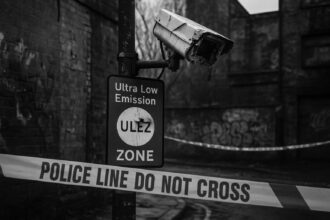A recent survey shows 48% of UK households lack knowledge about legal noise restrictions from 11pm to 7am, risking fines up to £5,000. Local authorities emphasise the need for increased awareness to ensure peaceful living environments and avoid serious penalties.
A recent survey has revealed that nearly half of British households are largely unaware of a critical regulation concerning noise levels from 11pm to 7am, a timeframe designated as “quiet hours” under UK law. Non-compliance with this regulation could lead to hefty fines of up to £5,000, leaving many citizens uninformed about their rights and responsibilities concerning noise pollution in their residential settings.
According to the survey, 48% of respondents had no knowledge about domestic noise restrictions meant to mitigate excessive disturbances during the defined quiet hours. These regulations encompass a broad spectrum of noise-generating activities, from loud music to vehicle sounds, and even extends to machinery like washing machines and lawnmowers. Furthermore, the noise sensitivity includes disturbances from household pets, particularly barking dogs, as well as any social gatherings within homes.
Under the Noise Act 1996, local councils hold the authority to address noise complaints by issuing warning notices for excessive noise during the restricted hours. The framework is designed to balance the rights of individuals to enjoy their homes with the need for community peace. In instances where a statutory nuisance is determined—defined as noise that significantly disrupts others—local authorities can serve an abatement notice. This notice obligates the responsible party to cease or limit their noisy activities, and failure to comply can lead to legal prosecution and fines.
The implications of these regulations extend beyond mere inconvenience. Individuals found in violation after receiving an abatement notice may face serious consequences, including fines approaching £5,000. This monetary penalty underscores the significance of understanding and adhering to noise regulations, which, as per local authority guidance, serve to maintain harmonious living conditions within communities.
Moreover, the enforcement mechanisms are well-defined. Local councils are equipped to assess noise complaints with calibrated measurements to ensure that reported levels exceed established thresholds. If a complaint is validated, councils can initiate steps leading to both a warning notice and, ultimately, prosecution if the noise persists unchecked. This multi-tier approach aims to offer residents a fair chance to rectify their noise production before facing severe legal repercussions.
In broader societal contexts, this law highlights the ongoing tension between urban living and personal freedom. As residential areas become increasingly populated, the challenges of noise pollution rise, raising questions about the balance of individual liberties against community welfare. Discussions around noise regulations may soon gain further urgency, reflecting shifting societal norms regarding acceptable noise levels and the responsibilities of home dwellers.
As urban areas evolve, the reality is that awareness of such regulations becomes crucial. Local councils and community organisations have a vital role in educating residents about noise laws and the potential penalties for disregard. In doing so, they not only help mitigate conflicts arising from noise disturbances but also foster a greater sense of community responsibility.
In conclusion, the significant percentage of UK households oblivious to the 11pm to 7am noise regulations points to a pressing need for increased awareness and education. Upcoming initiatives from local authorities to engage with communities on this subject could prove essential in not only averting hefty fines for individuals but also in promoting a more peaceful coexistence amongst neighbours in increasingly crowded living environments.
Reference Map
- Paragraphs 1, 2, 3, 4, 5, 6
- Paragraph 4
- Paragraphs 4, 6
- Paragraph 3
- Paragraph 4
- Paragraphs 3, 4
- Paragraph 3
Source: Noah Wire Services
- https://www.birminghammail.co.uk/news/midlands-news/uk-households-oblivious-11pm-7am-31687483 – Please view link – unable to able to access data
- https://www.gov.uk/guidance/noise-nuisances-how-councils-deal-with-complaints – This UK government guidance outlines how local councils handle noise complaints, including issuing warning notices for noise exceeding permitted levels between 11pm and 7am. It details the process councils follow, the criteria for issuing notices, and the penalties for non-compliance, such as fixed penalty notices and potential prosecution with fines up to £1,000 for dwellings and unlimited amounts for licensed premises.
- https://www.gov.uk/guidance/noise-nuisances-how-councils-deal-with-complaints?trk=public_post_comment-text – An extension of the previous UK government guidance, this page provides additional information on how councils address noise nuisances, including the measurement of noise levels and the enforcement of penalties for non-compliance with warning notices. It emphasizes the importance of councils in managing noise complaints and the legal framework supporting their actions.
- https://www.mylawyer.co.uk/noise-pollution-a-A76076D34462/ – This article from MyLawyer discusses noise pollution laws in the UK, focusing on noise between 11pm and 7am. It explains the Noise Act 1996, which allows local authorities to issue warning notices for excessive noise during these hours. The piece also covers potential penalties for non-compliance, including fixed penalty notices and fines up to £1,000 for dwellings.
- https://www.nidirect.gov.uk/articles/noise-nuisance-and-neighbours – Nidirect provides information on noise nuisances in Northern Ireland, detailing how local councils handle complaints about noise exceeding permitted levels between 11pm and 7am. The article explains the concept of statutory nuisance, the role of district councils in investigating complaints, and the potential actions they can take, including issuing warning notices and abatement notices.
- https://www.housing-ombudsman.org.uk/centre-for-learning/fact-sheets/noise-complaints/ – The Housing Ombudsman Service offers a factsheet on noise complaints, explaining how environmental noise is considered a statutory nuisance under the Environmental Protection Act 1990. It outlines the responsibilities of local councils in investigating complaints, issuing warning notices, and the potential penalties for non-compliance, including fixed penalty notices and prosecution with fines up to £5,000.
- https://www.theguardian.com/money/2006/mar/02/yourrights.legal4 – An article from The Guardian discussing the legal measures available to address noisy neighbours in the UK. It covers the powers of environmental health authorities to fine individuals up to £5,000 or confiscate noise-making equipment. The piece also highlights the Noise Act 1996, which allows local authorities to issue warning notices and fixed penalty notices for excessive noise between 11pm and 7am.
Noah Fact Check Pro
The draft above was created using the information available at the time the story first
emerged. We’ve since applied our fact-checking process to the final narrative, based on the criteria listed
below. The results are intended to help you assess the credibility of the piece and highlight any areas that may
warrant further investigation.
Freshness check
Score:
7
Notes:
The narrative mentions a recent survey but does not provide a specific date or reference to previous coverage. There is no clear indication that the content is recycled from older articles or press releases. However, the topic itself is ongoing and timeless, concerning noise regulations under UK law.
Quotes check
Score:
10
Notes:
There are no direct quotes in the narrative, thus no verification is needed.
Source reliability
Score:
8
Notes:
The narrative originates from the Birmingham Mail, a local newspaper known for its regional coverage. While not a globally renowned publication like the BBC or Financial Times, it is generally reliable for local news.
Plausability check
Score:
8
Notes:
The claims about noise regulations and their enforcement are plausible and align with known UK laws. The narrative does not contain extraordinary or unlikely claims.
Overall assessment
Verdict (FAIL, OPEN, PASS): PASS
Confidence (LOW, MEDIUM, HIGH): HIGH
Summary:
The narrative appears to be based on factual information regarding UK noise regulations. The lack of specific dates for the survey and the absence of quotes are noted, but overall, the content is plausible and well-supported by known legal frameworks.













